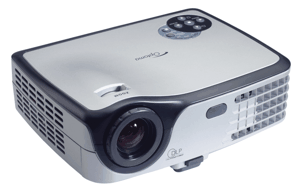 Here are a few tips to help keep your projector running at its best.
Here are a few tips to help keep your projector running at its best.1. Have your equipment powered down before connecting any cables. A signal cable carries a current while powered on and a sudden difference in electrical current can potentially burn out the projector lamp or cause other damage to projector components.
2. Use economy mode whenever possible. If your using a projector that has over 2000 lumens (a term used to describe the brightness of the projector), it usually has some sort of economy mode. If the event does not require full projector brightness use this mode to extend lamp life. Economy mode will lower the amount of lumens to save power and lengthen lamp life.
3. Avoid moving the projector as much as possible while it is powered on. The lamp, along with various other projector components, are sensitive to shakes or bumps. Any significant trauma could damage the projector and or lamp.
4. Do not unplug the projector after powering down. The cooling fan will continue to run in order to cool the lamp after shutting down the projector. It is recommended to keep it plugged in for at least another 3 minutes, doing otherwise could shorten the lamp's life or even damage the lamp.
5. Clean your projector. Dust is the bane of projectors when allowed to collect in the filter or on the lens. A microfiber cloth works well for cleaning the lens. If dust collects on the filter it will block the filter and decrease air flow which can affect the projector's cooling and can shorten lamp life.
You will have noticed in these tips that we pay special attention to preserving the life of the lamp. The reason for this is because the lamp is the most crucial part of the projector, and as such, is the most expensive component to replace. Projector costs have gone down significantly in the past few years, but replacement lamps have not. Lamps can cost up to $400 so you can see why it might be important to conserve as much lamp life as possible.


 Welcome to our new Projector Blog. We hope to fill this blog in the weeks to come with useful information on AV products and their use for the business and consumer market. We promise this site will never be used for Google Adwords or other sponsored links. We will recommend at no charge those resources that can help our readers who are interested in projector technology and it’s practical application.
Welcome to our new Projector Blog. We hope to fill this blog in the weeks to come with useful information on AV products and their use for the business and consumer market. We promise this site will never be used for Google Adwords or other sponsored links. We will recommend at no charge those resources that can help our readers who are interested in projector technology and it’s practical application.